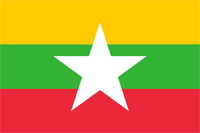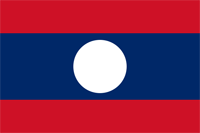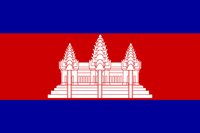The Association of Southeast Asian Nations (Asean), currently with 10 member states, is increasingly a force to be reckoned with. The following is an update of the development of five of Asean’s countries – The Philippines, Myanmar, Malaysia, Cambodia and Laos – in various areas. With the boost of regional cooperation, these countries are experiencing upgrades in infrastructure, economy and government at such a rapid pace that it can be hard to keep up with.

THE PHILIPPINES
Booming trades: Tourism, business process outsourcing, manufacturing, agriculture and ship building.
Popular scenic spots: Besides Boracay and Cebu, Bohol has begun attracting an increasing number of visitors with its "Chocolate Hills", tarsier monkeys and river cruises, while Palawan’s underground river, which was recently named a Unesco heritage site, and Ariara Island are also becoming hot attractions.
Air connectivity: A vast number of international carriers fly into Manila – which accounts for 75 per cent of the country's air traffic – to both Ninoy Aquino International Airport, and increasingly to the nearby Clark International Airport (click here) which recently cut passenger fees (click here).
Philippine Airlines has an ambitious expansion plan (see here) and recently ordered 54 new aircraft from Airbus (see here). This year, low-cost carrier Cebu Pacific is also set to receive the first two of eight A330s on order, and has a number of destinations in mind for its network (see here).
Infrastructure: This archipelago with over 7,000 islands has a number of airports, and those serving international carriers include the facilities in Davao, Cebu, Iloilo, Palawan and Boracay. There are expansion works at a number of them, says Benito Bengzon Jr, assistant secretary of international tourism promotion at the Department of Tourism, but Puerto Princesa International Airport, in Palawan, is being significantly improved in order to accommodate the increasing number of tourists.
The Department of Transport and Communication has also recently announced that it will be installing night landing facilities in 14 airports which will help decongest traffic, particularly in Manila, as planes can land earlier and much later.
Bengzon added that the two governmental bodies are also working together to "identify road infrastructure projects and seaports near major tourist destinations that need attention."
Visa situation: Free for the majority of nationalities, but the duration of stay varies (see here).

MYANMAR
Booming trades: Oil and gas, mining, gemstones, manufacturing and, most recently, tourism.
Popular scenic spots: Besides Yangon, the country's largest city, the ancient capital of Mandalay is popular with tourists.
Air connectivity: Since the country opened up in April last year, an increasing number of international carriers have begun flights to Yangon (see here), including Dragonair (see here), ANA (see here), Myanmar Airways International, Bangkok Airways, Thai Airways, Silk Air, JetStar (see here), Air India, China Southern, Thai Air Asia, Air Asia, Mandarin Airline, Vietnam Airline, Air Bagan, China Eastern, Qatar Airways, Eva Air, Korean Air (see here), Condor Air and Astana.
Infrastructure: Most visitors to the country use Yangon as the port of entry, and it is creating a lot of strain on the airport. To ease the pressure facilities at the other airports in Mandalay and national capital Naypyidaw are being enhanced, says Lynn Lynn, executive officer at Myanmar Tourism Federation. Hanthawaddy International Airport is also under construction in Bago.
At the moment there are 787 hotels and 28,000 rooms – a gross undersupply considering the skyrocketting amount of tourists. But new ones are being built in preparation for the World Economic Forum on East Asia, to be held in Naypyidaw on June 5-7 this year, and the Asean Tourism Forum in 2015.
Visa situation: Since last year visas have been issued on arrival to business travellers. Leisure tourists must apply for visas beforehand in embassies in their home countries, and pay the applicable fee.

LAOS
Booming trades: Agriculture, tourism and manufacturing.
Popular scenic spots: Luang Prabang, the royal capital of the former Kingdom of Laos, and the capital Vientiane (see here), as well as Xiengkhouang Province with its mysterious rock formations and Pha Phen, which is home to the largest waterfall in the Mekong River.
Air connectivity: There are regional air links to Bangkok, Chiang Mai, Hanoi, Ho Chi Minh City, Kunming, Guangzhou, Phnom Penh, Siem Reap, Singapore, Seoul and Kuala Lumpur operated by Lao Airlines (see here). Other airlines serving the country are Thai Airways, China airlines, Bangkok Airways, Laos Central Airlines and Jin Air. But there is a distinct need for direct flights to long-haul destinations, says Saly Phimphinith, director general of the tourism marketing department, adding that the government is in discussions with Japan Airlines, Air France and Aeroflot to establish these.
Infrastructure: Vientiane International Airport's capacity and safety standards were improved for the Asia-Europe Meeting Summit last year, and the airport can now accommodate 40 aircraft. There is also Pakse Airport in Luang Prabang and another airport in Savannakhet, the second largest city to the country's west along the border with Thailand. There are 442 hotels at the moment, with a Crowne Plaza coming soon to the country's capital.
The road network, in particular, has undergone work recently in order to improve linkages with Lao's five neighbouring countries. The conditions of Highway No 13 (from Myanmar to Thailand), No R3 (from Thailand to China) and No 8, 12, 9, 18 (all between Thailand and Vietnam at different points in Laos) have all been improved.
Visa situation: Visa on arrival (30 days) is widely available – at all airports and 21 out of 23 border checkpoints – and it can also easily be extended. It costs around US$20 for most nationalities. Asean member countries can enter visa-free.

CAMBODIA
Booming trades: Rice exportation, tourism, garment manufacturing and agriculture.
Popular scenic spots: Siem Reap, the gateway to the famous Angkor Wat; Tonle Sap Lake – the largest lake in Southeast Asia – and Kampot Province, which is full of national parks and waterfalls.
Air connectivity: The country enjoys strong air connections, with three international airports in Phnom Penh, Siem Reap and Preah Sihanouk, and Cambodia’s Angkor Air is expanding.
International carriers serving the nation include Air Asia, Air France, Asiana Airlines, Bangkok Airways, Cebu Pacific, China Airlines, China Eastern, China Southern, Dragonair, Eva Air, JetStar Asia, Korean Air, Lao Aviation, Malaysia Airlines, Shanghai Airlines, Silk Air, Thai Air Asia, Thai Airways International and Vietnam Airlines.
Qatar Airways has also announced that it will launch services to Phnom Penh in February (see here).
Infrastructure: International operations at the Preah Sihanouk Airport will be increased, said Prak Vuthy, chief of marketing and promotion office in Asean for Cambodia's ministry of tourism, and there will be a new terminal added to Siem Reap International Airport. There are also plans for to build another airport outside Phnom Penh in four or five years, he said.
With regards to highway development, Vuthy noted that “road conditions infrastructure been improved”.
Visa situation: Visa-on-arrival is available from every land check point and airport, for the vast majority of nationalities. There is a standard fee of approximately US$20. Cambodia recently established a single common visa with Thailand (see here).

MALAYSIA
Booming trades: Manufacturing, primary commodities such as petroleum, palm oil, natural rubber and timber, as well as tourism.
Popular scenic spots: Sabah, Langkawi, the Batu Caves in Selangor and Melaka, the historical city of Malaysia.
Air connectivity: Malaysia Airlines has recently been expanding and reviving long-haul routes, increasing capacity to France (see here) and other European points, and also recently joined Oneworld airline alliance (see here). Other than that there are over 40 international airlines that fly into the country, and Indonesia’s Lion Air is launching a joint venture airline with Malaysia's National Aerospace and Defence Industries called Malindo Airways (see here), to compete with the already extremely successful Air Asia.
Infrastructure: The main airport in the country is the Kuala Lumpur International Airport (KLIA), which services over 45 international airlines. The building of KLIA2, dedicated to low-cost carrier passengers, was completed in May, 2012, and is set to open in July 2013.
Other major international airports are located in Penang, Johor Bahru, Kuching, Kota Kinabalu and the island of Langkawi.
Port Klang, the country’s largest seaport, is situated about 41km away from Kuala Lumpur.
Visa situation: Citizens of most countries do not require visas for leisure or business visits.
Alex Andersson








